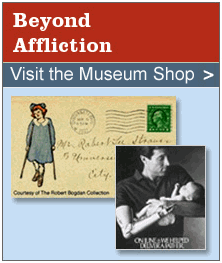Education: Lesson Details
Study Guide: Activities and Procedures
Section 1 - READING
Students are assigned to read a brief biography of Dix, an essay on women, an essay on religion, and petitions to the Massachusetts Legislature and to the U.S. Congress.
Background Essay: Miss Dorothea Dix
Background Essay: Religion In Nineteenth-Century America
Background Essay: Women In Nineteenth-Century America
Background Essay: Women and Nineteenth-Century Reform
Annotated & Abridged Document:
Memorial To The Legislature of Massachusetts
Annotated & Abridged Document:
Memorial Of Miss D. L. Dix To the Senate And House Of Representatives Of The United States
Section 2 - CLASS DISCUSSION
Students discuss the Dix Memorials. They focus on the following overarching question in a teacher led-discussion: What makes Dix’s Memorial effective or ineffective? They also answer the specific questions for each reading.
Annotated & Abridged Document:
Memorial To The Legislature of Massachusetts
1.) In paragraph 2, how does Dix deal with the fact that she is a woman acting in the male sphere of politics?
2.) What seems to make Dix’s petition effective? What are Dix’s rhetorical strategies? What response does she want from her readers?
3.) Read paragraph 24 closely. What happens? What role does religious imagery play here?
4.) What are the elements of this document that make it rhetorically effective? Which of those elements are dependent upon historical circumstances?
Annotated & Abridged Document:
Memorial Of Miss D. L. Dix To the Senate And House Of Representatives Of The United States
1.) What do paragraphs 11 and 12 suggest about Dix’s reputation among at least some members of Congress?
2.) In paragraph 12, Senator Foot says that Dix’s inquiries were marked by “the devotedness of her sex, and with the firmness of purpose characteristic of the sternest of our own?” What does he mean? What does this suggest about gender norms in antebellum America? Does femininity seem to give Dix a special sort of authority? How would you describe it?
3.) In paragraph 67, Dix describes what she saw. Does this add to the weight of her authority?
4.) After reading this petition, who do you think would be allied with Dix? Who would be opposed? Why?
5.) Are Dix’s arguments convincing? Should the federal government assume the responsibilities she advocates? What makes her arguments convincing now? What would have made them convincing in 1854? Do you find any weaknesses in her arguments?
Section 3 - INDEPENDENT ASSIGNMENT
Women in the mid-1800s. Students are assigned to do independent research on women in public life in the mid-1800s (1840-1860). They are asked to address the following questions: What other women were prominent in public life in the mid-1800s? Why were they prominent? How could women participate in public life (e.g., examine voting rights, holding elected or appointed public positions)? Students report the results of their research in class.
Section 4 - ESSAY
Students are asked to write an essay on the topic: Why is Dix’s statement in the second paragraph of her memorial (“Surrendering to calm and deep convictions of duty my habitual views of what is womanly and becoming, I proceed briefly to explain what has conducted me before you unsolicited and unsustained, trusting, while I do so, that the memorialist will be speedily forgotten in the memorial.”) historically significant?
Bibliography
Dain, Norman, Concepts of Insanity in the United States, 1789-1865 (New Brunswick: Rutgers University Press, 1964).
Gollaher, David, Voice for the Mad: The Life of Dorothea Dix (New York: The Free Press, 1995).
Grob, Gerald N., The Mad Among Us: A History of the Care of America’s Mentally Ill (New York: The Free Press, 1994).
Katz, Michael B., In the Shadow of the Poorhouse: A Social History of Welfare in America (New York: BasicBooks, 1986).
Rothman, David, The Discovery of the Asylum (Boston: Little Brown, 1971).
Tomes, Nancy, The Art of Asylum-Keeping: Thomas Story Kirkbride and the Origins of American Psychiatry (Philadelphia: University of Pennsylvania Press, 1984).






